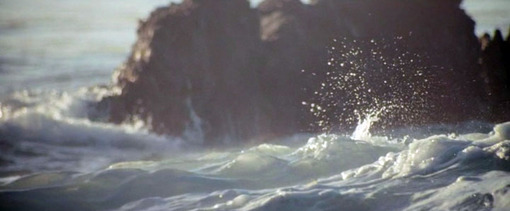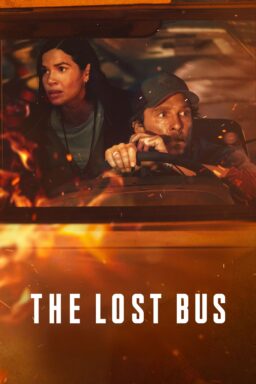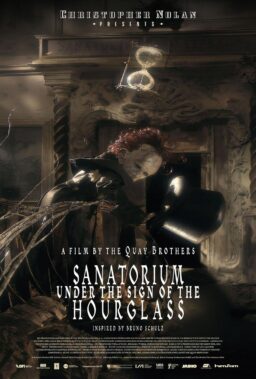This is the subject of endless inquiry for me (can there be only one quality that separates the good from the not-good?), but I can say that — all other things being A-OK — it all comes down to directorial concentration and economy: camera placement, movement, composition and (as I detailed in that Spielberg piece from 1982) how adeptly the movie gets from shot to shot to shot. You can have a terrific story, script, cast, “beautiful cinematography” and all that, but if the director doesn’t know how to convey information and emotion through composition and cutting, then the movie is going to feel flat.

Rarely have I seen these ideas enumerated so effectively and wittily as in A. D. Jameson’s “Seventeen Ways of Criticizing Inception,” a piece from August that was recently brought to my attention by David Bordwell (who found much to admire in the same movie).
[Quotations from Jameson are indented and in boldface.]

Now, before you get defensive, just forget about “Inception” and Christopher Nolan for a moment. They are used here as examples (feel free to substitute the Bryan Singer film of your choice), but what’s important above all are the principles Jameson is outlining. He appreciates some of the clever story and structural elements in Nolan’s films, but regrets the endless, insistent speechifying and paint-by-numbers cinematic imagination in the storytelling itself (criticisms I had of “The Dark Knight,” too):
But Nolan then fails to dramatize his concepts. His primary — indeed, practically his only–tool for delivering information to the audience is character dialogue. Rarely does anyone shut his or her mouth during the 148 minutes that are “Inception.” Its actors are talking threadbare ciphers, eager mouthpieces for their director. […]
In a similar fashion, Nolan’s filmmaking style is heavy on the literal, and extremely one-to-one. What you hear is what you get: if a character speaks, you can be sure the onscreen image will be of that character moving his mouth. If that character mentions something, then you can be sure that Nolan will cut to a close-up of that object. […]
And so it goes, 148-minutes worth (minus credits). And this is filmmaking dumbed down so far, so debased, that nearly all of its poetry, all of its 120-year-old rich artistry, is lost. (It’s not really cinema at all, in fact: it’s an illustrated script.) […]

I’ve raised these same issues here with a number of films, but most persistently since “The Dark Knight,” trying (and sometimes failing) to articulate precisely what I feel is missing from these films. I will quote Jameson’s #5 (almost) in its entirety, because it zeroes in on shot composition and progression:
Herr Wunderkind Nolan can accomplish in thirteen shots what it takes most directors six to do! (His closest rival here is, once again, the not-quite-ready-for-prime-time Bryan Singer.) Consider “Inception”‘s opening scene alone:
1. slow motion pan of waves crashing against a rock
2. slow motion shot of waves
3. close-up of Cobb’s face as he lies on the shore
4. point-of-view shot of a boy on the beach making a sandcastle
5. reverse shot of Cobb’s face
6. pov shot of the boy and a girl making a sandcastle
7. reverse shot of Cobb’s face
8. pov shot of the kids running out of frame
9. shot of a gun being pointed at Cobb’s back
10. reverse shot of a guard standing over him, holding the gun
11. reverse shot of the gun pulling Cobb’s shirt up, revealing his own gun
12. reverse shot of the guard calling to another guard
13. long shot of that other guard
…And then we cut inside. (Note the three shots of the kids. Again, Nolan’s concern is that we not miss a thing.)

This leads to an equally excellent follow-up post, “More on Inception: Shot Economy and 1 + 1 = 1,” in which Jameson proposes several other, more elegant and effective ways of shooting and cutting the opening scene — and other parts of the movie.
Thirteen shots is a lot of busyness in a scene that doesn’t really need it. All Nolan needs to establish at the start of the film is that:
1. Cobb has washed up on a beach.
2. He thinks he sees his kids.
3. An armed guard discovers him.
4. The guard is going to take Cobb to a Japanese mansion also on the beach.
If I’d been directing this film (amuse me), and had wanted to keep the same basic idea that Nolan used (fairly doubtful), then here’s how I would have tried it (i.e., this would have been my storyboard):
1. Establishing shot of the beach.
2. Closer shot of Cobb washed up on the beach.
3. Close-up of Cobb. (Click here for an explanation of close-ups, etc.–see the section “Shot Scale”.)
4. Reverse shot of his kids (to establish they exist in his POV).
5. Reverse close-up of Cobb.
6. Close-up of his back. A gun enters the frame to poke him.
7. Reverse shot of a guard holding the gun. He looks up and calls to another guard as the shot pans to a mansion on a nearby cliff.
…So, I would have used nearly half the number of shots that Nolan used. I would also have made each shot longer.
But, that all said, I wouldn’t have done it that way.
For one thing, I would have begun with a very tight close-up of Cobb, both for its unsettling effect (audiences don’t expect films to begin with close-ups), and to establish the possible reading that the entire film is going to take place in Cobb’s mind. (This seems to me so obvious that I’m surprised Nolan didn’t do it.) (No, actually I’m not surprised.)

Cribbing from his two of his favorite Hollywood movies of the last 25 years, Jameson comes up with an opening that is less fussy and redundant, not exactly innovative but uncommon:
1. Extreme slow-motion close-up of Cobb’s face. Begin tracking slowly backwards, enough to include spray from the water; maybe have a wave crash around Cobb’s head. Use the soundtrack to establish that he has washed up on a beach.
2. Reverse shot of kids (to establish they exist in his POV).
3. Reverse extreme close-up of Cobb, continuing that backwards tracking shot (enough so we see some of his body).
4. Close-up shot of his back. A gun enters the frame to poke him.
That’s four shots rather than thirteen — assuming he’d choose to open the film with this scene (which he says he might not).
My consistent complaint about recent movies, and particularly narrative films that rely on spacial relationships for their energy — for their very meaning — is their directors’ disregard for the integrity of those relationships in framing and cutting. The opening of “Inception” isolates each element so that the scene is made up entirely of what might be called “insert shots” — unmoored from any larger context: the waves, the close up of Dom, the kids, the gun, the soldier, the mansion. We don’t see Dom in this environment, even when we cut to the long shot. My first thought was that it looked cheap — like a sloppy assemblage of stock footage. If I’m paying to see Leonardo DiCaprio wash up on a beach, I want to see him on the beach — not just a disembodied close-up!
It occurred to me that perhaps Nolan was going for some manner of dreamlike (or dream-ish, since these aren’t really dreams at all) disorientation, but the repetitions aren’t disorienting, they’re merely redundant. Over-insistent. Cinematic highlighting/underlining. Belt and suspenders.
Like that.











